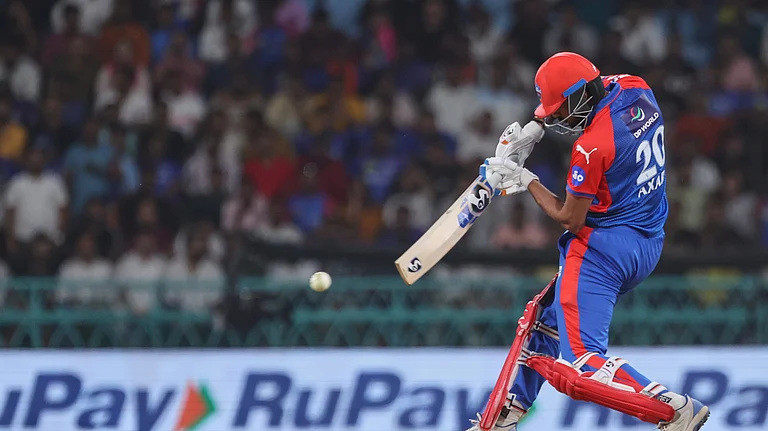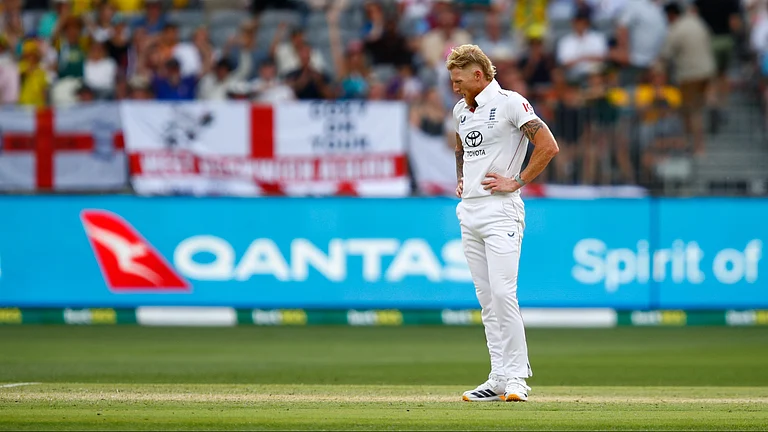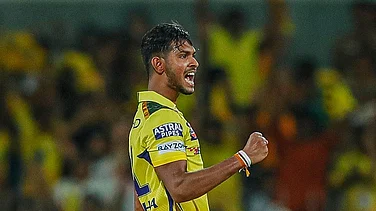IT was for real. It happened. Indians should move away from the mentality that anything happening out here has to be low-key and of dubious quality," says Brian Cooney, executive vice-president, International Management Group (IMG). He was reacting to the lackadaisical attitude among Indian people and the media about the importance of the McDowell Indian Open, the first ever ATP World Series tournament in Delhi which concluded last week.
Played on deco turf and under lights at Delhi's newly constructed R.K. Khanna stadium, the event brought to India quality tennis outside the Davis Cup. Built in a record 14 months and at a cost of Rs 8 crore, the stadium was ranked among the "top 10" in the world by Steve Casey, director of communications on the ATP tour.
One of the 85 ATP tennis tournaments in the world, it was brought by IMG to Delhi from Nice where it wasn't doing well. Says Richard Alfred, IMG general manager in India: "The whole project is costing us around two million dollars. The tournament at Nice was up for grabs and we brought it here after negotiation. We could have taken it anywhere else in the world but we didn't." The IMG currently owns three other ATP tennis tournaments around the world, at Buenos Aires, Scotsdale in the US and Marseilles in France. And with the ATP tour refusing to increase the number of tournaments on the circuit, the only way a new centre can come up is if one of the established ones runs aground financially.
Planning to break even in the second year, IMG roped in McDowell as one of the title sponsors. Says Sai Papineni, manager, sales promotion, McDowell: "We have a commitment of around $100,000 every year for six years. If IMG manages to get in a sponsor dishing out more than that, the title goes to them." The other co-sponsors include Pepsi, Hyatt, Mercedes and Reebok, who make up for the total prize money of $430,000.
While Mercedes promotes tennis in Europe, this is the first time it's sponsoring a sport other than golf in Asia. Says Gunter W. Loock, vice-president, marketing, Mercedes Benz India: "Though cricket is the number one sport in India, we don't know where to fit in there. Besides other companies are already in the fray. We'll be better off targeting an emergent sport."
Even McDowell, who spend 20 per cent of it's ad budget on sports sponsorship, has identified tennis and golf as the emergent sports here. The company has a 12-year association with auto-racing in the South and the Bangalore Derby, besides sponsoring a football tournament in Calcutta from last year.
The Indian Open itself fits in well with the international hard court schedule, the tournaments in Tokyo and Seoul following. But tennis tournaments have a high mortality rate. Says Casey: "The tournament in Osaka moved to Shanghai last year. IMG themselves moved this one from Nice to Delhi." Even Australian tennis has seen the loss of four tournaments since the '80s. Says Cooney: "Sports sponsorship is linked to the health of the economy. The Australian economy isn't all that good now. It has even impacted on golf. Now we have just seven golf tournaments compared to 15 a few years back."
Also, in spite of the draw which had two world top 10 players playing, Thomas Enq-vist and Wayne Ferreira, crowd presence at the stadium was dismal. The early exit of the Indians did little to help. Leander Paes lost in the first round to Byron Black and Mahesh Bhupathi to Enqvist in the second.
While Asia is the fastest growing area for the ATP tour—which has seen a jump in revenue from $20 million in 1990 to $60 million in 1995—the tour itself doesn't guarantee sustainability of the centre. Says Michael Duff, executive vice-president of the ATP tour: "We believe in open competition between events. That translates into good prize money for the players. The long term viability of any tournament centre depends on its ability to attract sponsorship."
While the Indian Open has a lot going for it, what is a tremendous selling factor is the viewership potential of Doordarshan plus the 71 countries it will be beamed into. Adds Casey about the stadium: "Each seat has a full view and there are just two courts in the centre. Places like Seiko in Japan have three courts and three matches go on simultaneously. That's disturbing."
But in the end it might not be just enough to sell it as another new place to go to for the players. Says world number 128, San-don Stolle: "Though that's definitely a plus point, what's going to be even more important is the feedback the players are going to give about the tournament on the circuit." This positive attitude of the players towards the centre is a nice beginning.






















